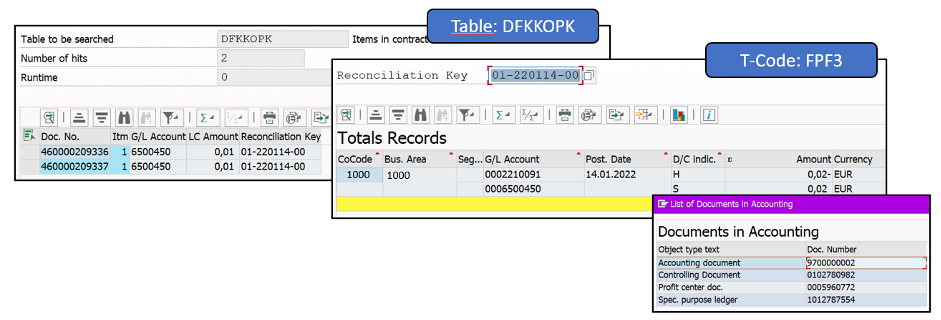
Aprende en Comunidad
Avalados por :





¡Acceso SAP S/4HANA desde $100!
Acceso a SAPOptimización del rendimiento en SAP FI-CA mediante la transferencia de claves de conciliación al libro mayor
- Creado 01/03/2024
- Modificado 01/03/2024
- 30 Vistas
Let's quickly review what reconciliation keys are and what they are for.
Recall that SAP FI-CA is a sub-accounting of the General Ledger and the accounting postings, which in FI-CA are associated with a Contract Account, are not immediately transferred to the General Ledger but are stored in an object called Reconciliation Key in the form of a summary record.
These summary records summarize the total of the accounting postings on each general ledger account and are transferred to FI only when the reconciliation key that contains them is transferred (the transfer of keys generally takes place once a day).
The advantage of this aggregation and transfer technique consists in a significant improvement in system performance, which is particularly useful in industries dealing with a large number of customers and commercial transactions.
The aggregation of accounting records is carried out using various criteria, including:
- Company Code
- Business area
- G/L Account
- Currency
- Posting date
- Additional account assignments of controlling
- …
Below is an example of two FI-CA documents (460000209336, 460000209337) whose accounting postings are contained in the same reconciliation key: in the latter there are the accounts handled with the sum amounts of those of the two documents. The transfer of this key then led to the creation of a single FI document (9700000002).
A very interesting feature that SAP FI-CA makes available is the possibility to choose whether a certain document (or a certain type of documents) must be transferred to General Accounting without being subject to any type of aggregation.
That is, we can "tell" the system that a given FI-CA document must correspond to an FI document (unlike the case shown in the previous image where two FI-CA documents correspond to a single FI document). Among other things, it is also possible to choose the type of document that must be created in FI (if you want to use one in particular)
Let's see in detail how to use what is explained on SAP.
It is possible to ensure that a FI-CA document is transferred to FI without being subject to aggregation with other documents using the Single Document indicator (this information is contained in the header of the document, DFKKKO-XEIBH field).
This indicator causes a separate document to be created in the General Ledger for the FI-CA document.
In event 0061 , within the C_FKKKO_CUS structure, it is possible, during the posting phase of the FI-CA document, to set the Single Document indicator and specify the FI document type to be created during the transfer of the related reconciliation key (this information is contained in the header of the document, DFKKKO-HBBLA field).
If the document type is not determined in event 0061, the transfer takes place as specified in the registration area 0100 :
I am writing you the link of two very interesting blog posts on reconciliation keys (they contain important concepts, transactions, tables, FM, etc).
https://blogs.sap.com/2016/06/21/reconciliation-key-transfer-concept-fica-to-fi-transfer/
https://blogs.sap.com/2018/01/19/life-cycle-of-reconciliation-key-and-back-end-table-updates/
Let me know in the comments if what I wrote is useful for you and if other posts like this one can be useful.
Sin respuestas
 No hay respuestas para mostrar
Se el primero en responder
No hay respuestas para mostrar
Se el primero en responder
© 2025 Copyright. Todos los derechos reservados.
Desarrollado por Prime Institute




